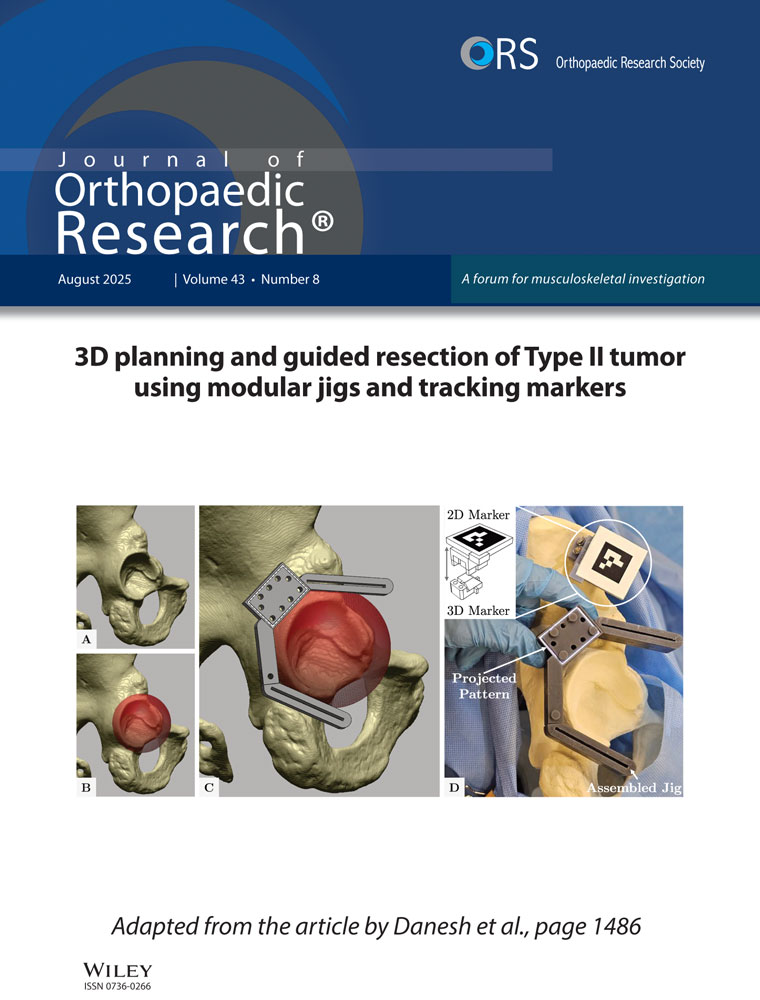Characterization of cultured human ligamentum flavum cells in lumbar spine stenosis
Abstract
To investigate the pathogenesis of the degenerative changes of the ligamentum flavum occurring in lumbar spine stenosis, yellow ligament cells from patients with lumbar spine stenosis were cultured for the first time and subjected to biochemical, histochemical and immunohistochemical study. Stenotic ligamentum flavum (SLF) cells were seen to express high levels of alkaline phosphatase (ALP) activity and to produce a matrix rich in type I and III collagen, fibronectin and osteonectin. The matrix mineralized only following β-glycerophosphate (βGP) and ascorbic acid supplementation. Stimulation with human parathyroid hormone (PTH) increased intracellular cAMP concentration. These findings indicate that there was significant evidence of osteoblast-like activity in these cells. SLF cells also stained for S100 protein, type II and type X collagen, and co-localized type II collagen and ALP labelling, reflecting the presence of hypertrophic chondrocyte-like cells. Cultures from control patients showed neither osteoblastic nor chondrocytic features: they expressed type I and type III collagen and fibronectin, but did not stain for osteonectin, nor were bone-like calcifications observed in presence or absence of βGP. Normal ligamentum flavum (NLF) cells did not synthesized S100 protein or type II or type X collagen, and showed a weaker response to PTH stimulation. Our data demonstrated the presence of hypertrophic chondrocytes with an osteoblast-like activity in the ligamentum flavum of patients with spinal stenosis suggesting that they could have a role in the pathophysiology of the heterotopic ossification of ligamentum flavum (OLF) in lumbar spine stenosis. © 2001 Orthopaedic Research Society. Published by Elsevier Science Ltd. All rights reserved.




